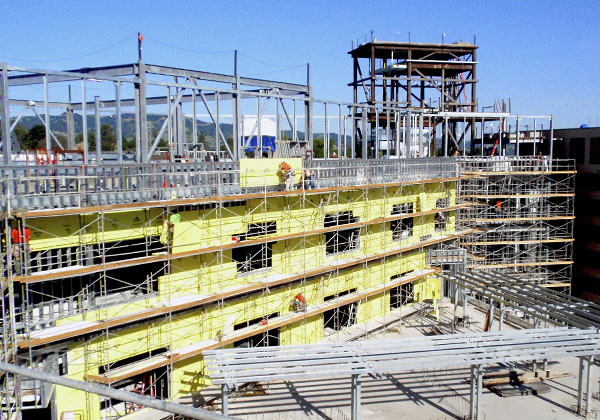Beyond Expectations: Boosting Productivity with Business Frameworks

Within the ever-evolving landscape of building, commercial scaffolding serves as a crucial component that enhances efficiency and safety in multiple projects. Ranging from skyscraping high-rises to complex rehabs, scaffolding provides the necessary support and access to work at heights, guaranteeing that workers can perform their duties effectively. However, what exactly is business scaffolding, and how come has it turned into indispensable in the contemporary building industry? Grasping its importance not only assists satisfy regulatory standards but also facilitates smoother project execution, eventually leading to successful results.
As we delve into the world of business scaffolding, we will explore different types of scaffolding systems, their function in enhancing job site security, and the regulatory guidelines such as OSHA guidelines that govern their use. Moreover, we will highlight key factors for selecting the right scaffolding options for your specific project needs, including high-rise buildings to retail and office builds. Ultimately, at the conclusion of this discussion, you will have a comprehensive understanding of how effective scaffolding practices can transform construction processes, guaranteeing both security and efficiency at every step.
Grasping Industrial Scaffolding
Business scaffolding is a temporary framework used to support workers and resources during the building or refurbishment of industrial facilities. It delivers a safe and stable platform for construction activities at different levels, enabling teams to perform tasks effectively. Frameworks is vital in major projects where traditional ladders or scaffolding alternatives may not suffice, allowing for greater access to various heights of a structure, boosting efficiency, and ensuring that tasks can be finished in a timely fashion.
There are various categories of scaffolding employed in commercial projects, such as framed frameworks, system scaffolding, and cylindrical scaffolding. Each kind serves different functions and is selected based on factors such as the project's particular needs, altitude, and intricacy. For case in point, system scaffolding is highly adaptable and can be adjusted for different construction layouts, while structured frameworks is often used for straightforward duties that do not need considerable customization. Comprehending the distinct categories helps site managers choose the optimal efficient method for their needs.
The role of scaffolding in current building cannot be overemphasized. browse around this site by delivering secure surfaces for laborers but also fosters to efficiency by minimizing the time workers spend transitioning between different floors. As industrial projects often involve groups working together on multiple tasks at the same time, efficient scaffolding solutions promote smooth activities, minimize hindrances, and encourage an organized work atmosphere. Ultimately, proper frameworks is essential for efficient project finishing, fulfilling deadlines, and ensuring high protection standards.
Security and Adherence in Scaffolding
Guaranteeing security and adherence is essential in scaffold operations, especially in business projects where the stakes are high. Employers must adhere to rigorous safety regulations set forth by agencies such as the Occupational Safety and Health Administration, which provide protocols that help maintain a safe working environment for all workers involved. Adherence with these standards not only protects workers but also reduces liability that can occur from accidents or dangerous practices on the worksite.
Education is a crucial aspect of safety compliance in scaffold systems. Workers must be equipped with the necessary expertise and capabilities to identify potential hazards and apply safety protocols effectively. This includes grasping how to conduct safety assessments, correct use of equipment, and following safety guidelines. By investing in thorough training initiatives, companies can foster a culture of safety, ensuring that team members are vigilant and prepared to address any challenges that may arise while working at elevated positions.
Moreover, routine maintenance and inspection of scaffold systems are essential for ongoing safety adherence. This involves checking for soundness, deterioration, and ensuring all components are operating correctly. By performing meticulous inspections and maintaining equipment, construction companies can proactively identify and address issues, thereby guaranteeing the safety of their employees and the complete effectiveness of the undertaking. A commitment to safety and compliance not only enhances worker safety but also boosts the efficiency and reputation of the organization as a complete entity.
Scaffold Systems for Modern Developments
In today's rapid construction industry, efficient scaffolding systems are essential for the successful completion of contemporary projects. With the increasing complexity and size of commercial builds, scaffolding methods must be flexible and responsive. Modularized scaffolding has emerged as a preferred choice in this landscape, offering quick assembly and disassembly, which reduces downtime on site. This flexibility allows contractors to respond swiftly to project changes and maintain strict schedules, ultimately enhancing productivity and efficiency.
Worker safety remains a top priority in any construction project, and advanced scaffolding solutions include features specifically designed to reduce risks. Current scaffolding tools often includes protective rails, non-slip surfaces, and automatic locking mechanisms to improve worker protection. Moreover, these solutions are designed to comply with the most current OSHA regulations and industry standards, ensuring that job sites maintain a satisfactory level of safety for all workers. Training programs tailored to familiarize workers with the specific scaffolding methods being used further bolster the commitment to a safe working environment.

The importance of scaffolding in the execution of large-scale jobs, such as tall buildings or large commercial complexes, cannot be overstated. Effective project planning and logistics play a vital role in the scaffolding installation, including factors such as load limits and site accessibility. Selecting the appropriate type of scaffolding and recognizing the unique needs of each job ensures that construction efforts proceed smoothly. As jobs continue to progress, embracing cutting-edge scaffolding systems will be key to enhancing overall efficiency, maintaining safety guidelines, and achieving project success in modern construction.
